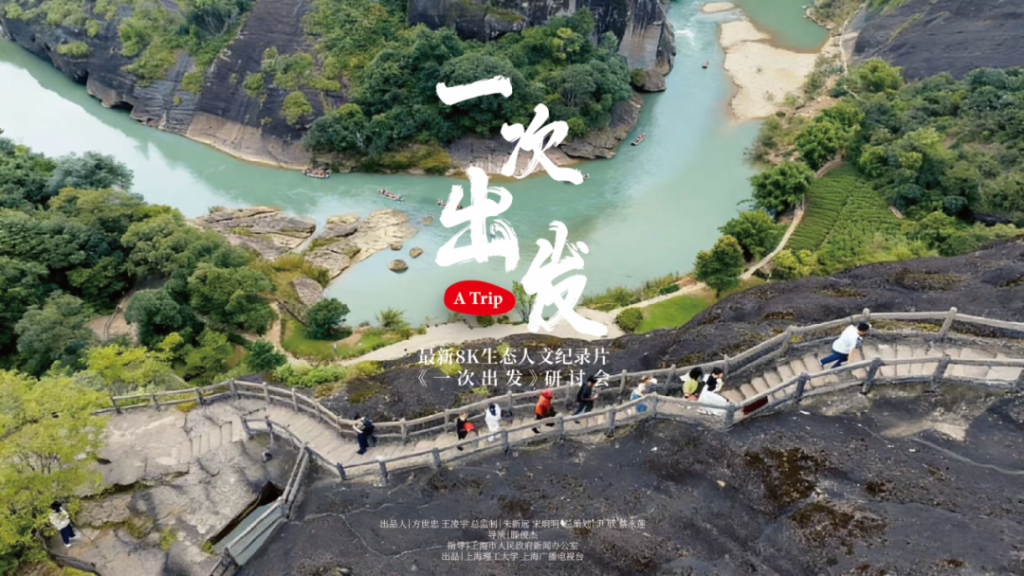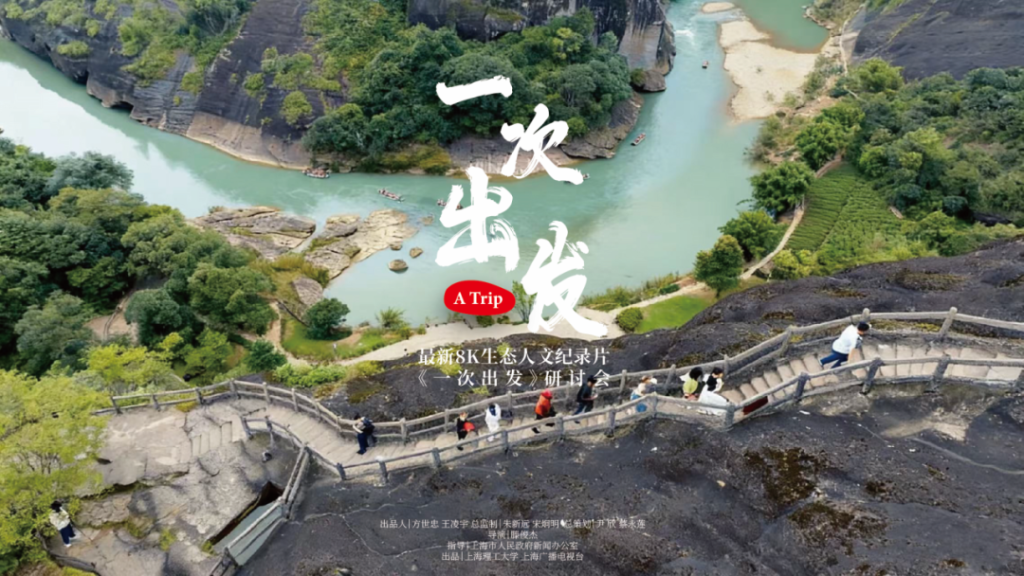
In the maple forest outside London (the filming location of the movie "Harry Potter"), the BBC Studios team wore special motion capture suits to shoot the Tyrannosaurus Rex scene. Thomas Scott recalled: "The residents walking their dogs nearby kept looking at us with curious eyes. I still can't forget their eyes and expressions. I hope that after the documentary is broadcast, they will understand that we are 'resurrecting' dinosaurs."
It is worth mentioning that although no actual excavation was conducted in China, the results of Chinese scientific research run through the new version of Walking with Dinosaurs. On May 27, at the sharing session of the classic return of BBC Studios Walking with Dinosaurs held in Beijing, Thomas Scott, head of R&D of the BBC Studios Science Department, shared the film's creative concept and behind-the-scenes story with the audience, and had a wonderful dialogue with Xing Lida, associate professor, doctoral supervisor, and director of the Dinosaur Mystery Science Museum of China University of Geosciences (Beijing).
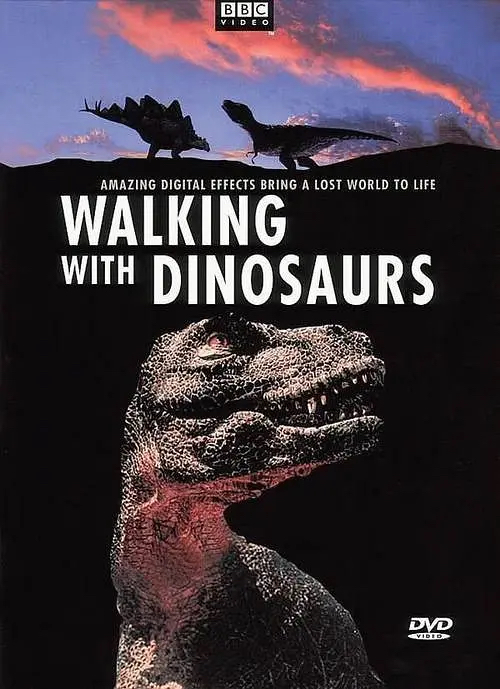
The first BBC series Walking with Dinosaurs
Thomas Scott, head of research and development at BBC Studios' science department, also watched the BBC's Walking with Dinosaurs when he was in middle school at the age of 14. He said, "This is also an important reason why I fell in love with dinosaurs."
25 years ago, the first dinosaur documentary produced by BBC Studios, Walking with Dinosaurs, opened a window to a lost world for the audience. This documentary also became the most watched scientific documentary program in the history of British television in the 20th century. 25 years later, Walking with Dinosaurs has made a heavy return.
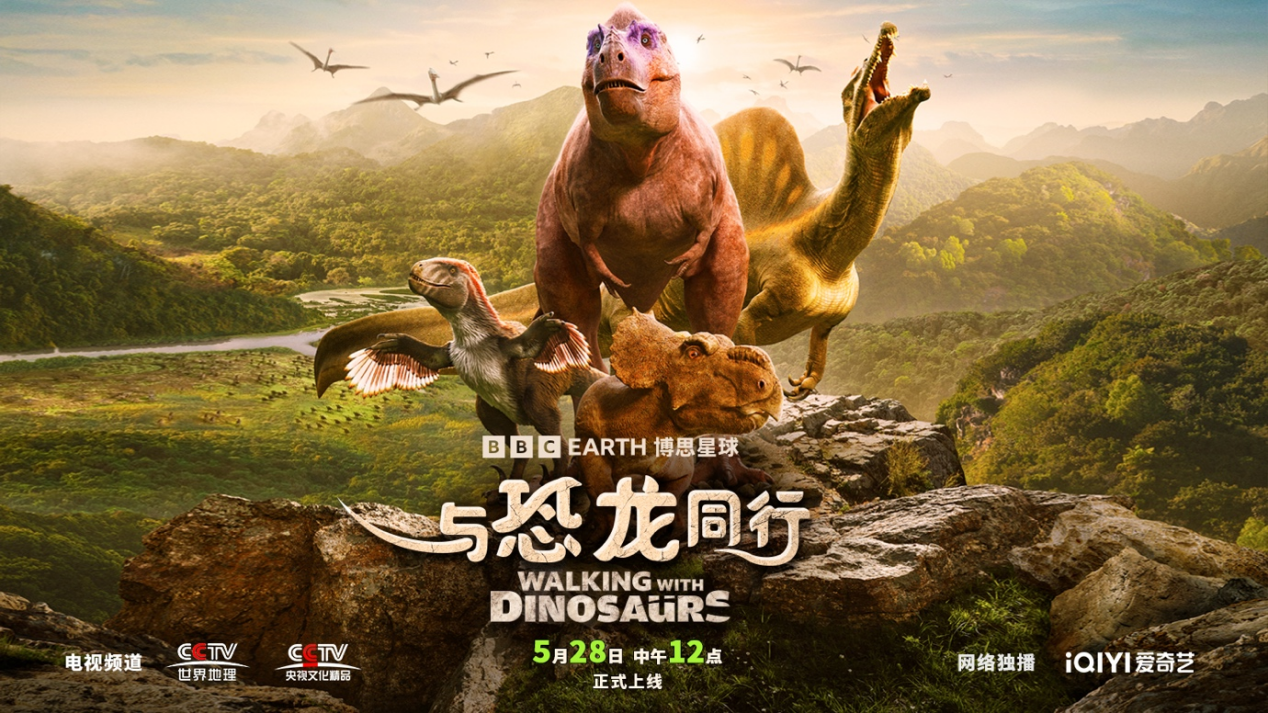
New version of "Walking with Dinosaurs"
BBC Studios Science Department has organically integrated the latest research results of the dinosaur community in the past two decades. From the Sahara Desert to the Utah wilderness, from the Canadian forests to the Portuguese hills, the production team has traveled all over the world and has created six new wonderful chapters - "Rainforest Orphans", "River Giants", "Brotherhood", "Clan Conflict", "Migration Path" and "Dragon Wars". Through the deep integration of cutting-edge visual effects technology and paleontological research results, it vividly presents the survival epic of six extraordinary dinosaurs from an unprecedented perspective. The film is narrated by actor Boddy Carvel and will be launched on CCTV World Geography Channel and CCTV Cultural Boutique Channel at 12 noon on May 28, and will be simultaneously launched on iQiyi.
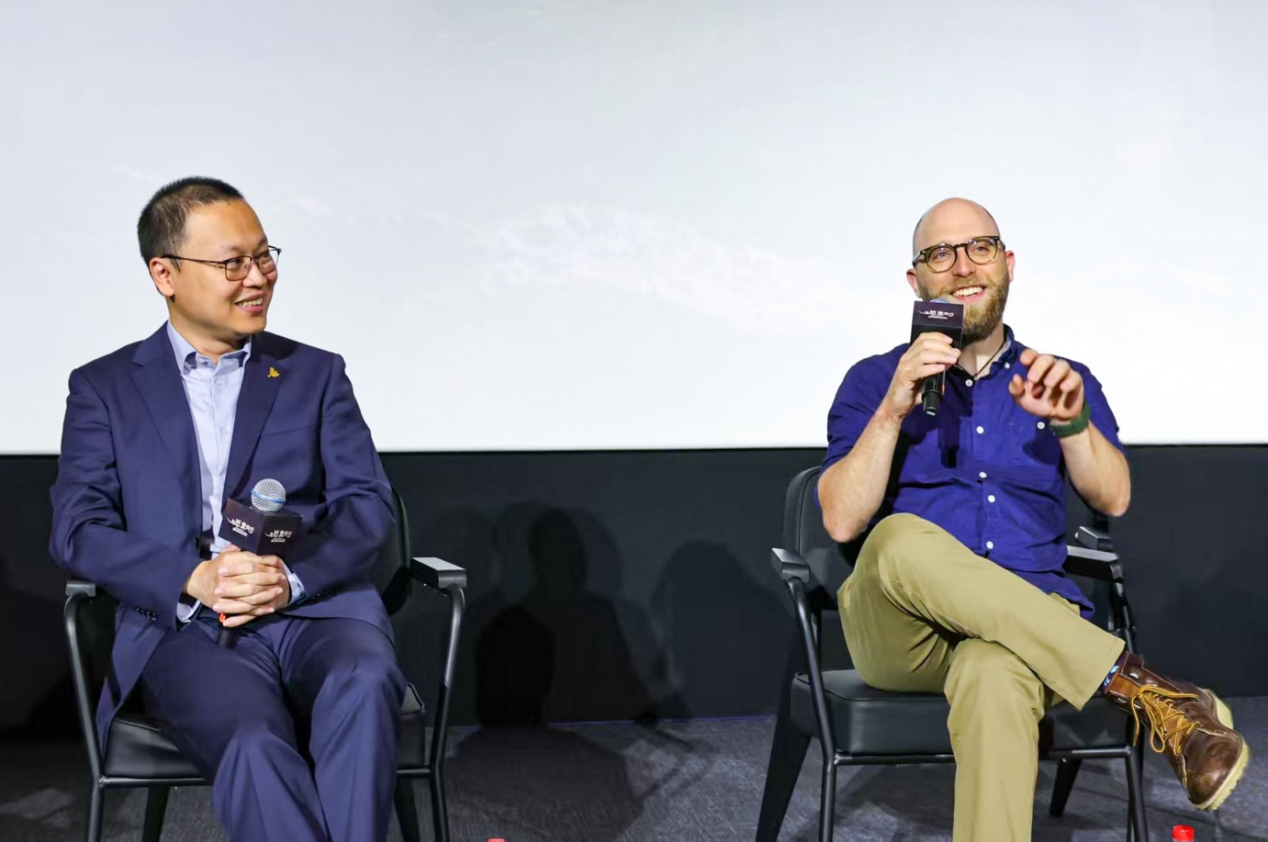
From left: Xing Lida, Thomas Scott
"When I watched Walking with Dinosaurs as a child, I thought the Velociraptor was really as tall as in the movie," Xing Lida, an associate professor at China University of Geosciences, recalled with a smile.
The BBC's dinosaur documentary inspired his love for paleontology. Now as a scientific consultant, he has witnessed the new version of "Walking with Dinosaurs" incorporating the research results of dromaeosaur footprints in Fujian, China into the CGI (computer-generated image) modeling of the Utahraptor.
"The excitement of participating in history is like touching a dinosaur fossil for the first time," said Xing Lida.
At the sharing session, he showed the fossils of dinosaur "resting tracks" found in Sichuan: "Dinosaurs sit and rest like this. They walk on their two legs all the time, and when they feel tired, they sit down. There are about three or four examples of 'resting tracks' found around the world. The dinosaur lies on the ground, and its hands can be seen. It's very cute." This kind of detail comes from his 20 years of research on dinosaur footprints. "The smallest dinosaur footprint in the world is only 10 mm, and the largest is 1.8 meters. We have also found footprints of dinosaurs that can swim in Sichuan. They paddle the water with their claws, just like dogs paddle." These discoveries not only fill in the gaps in bone fossils, but also reveal the daily behavior of dinosaurs. For example, the footprints of the Portuguese dragon show that one of its legs is lame. "This pathological feature makes the image of dinosaurs more realistic, and no longer a perfect 'prehistoric killer'."
During the filming process, the challenges of CGI technology were present throughout. "The dinosaurs we saw were initially just gray silhouettes, without texture, movement or even sound. It was not until more than 1,200 CGI shots were delivered that they came to life with realistic feathers and muscle movements." Thomas Scott explained, "You have to trust the scientific data, like a puzzle, until the last piece falls into place."
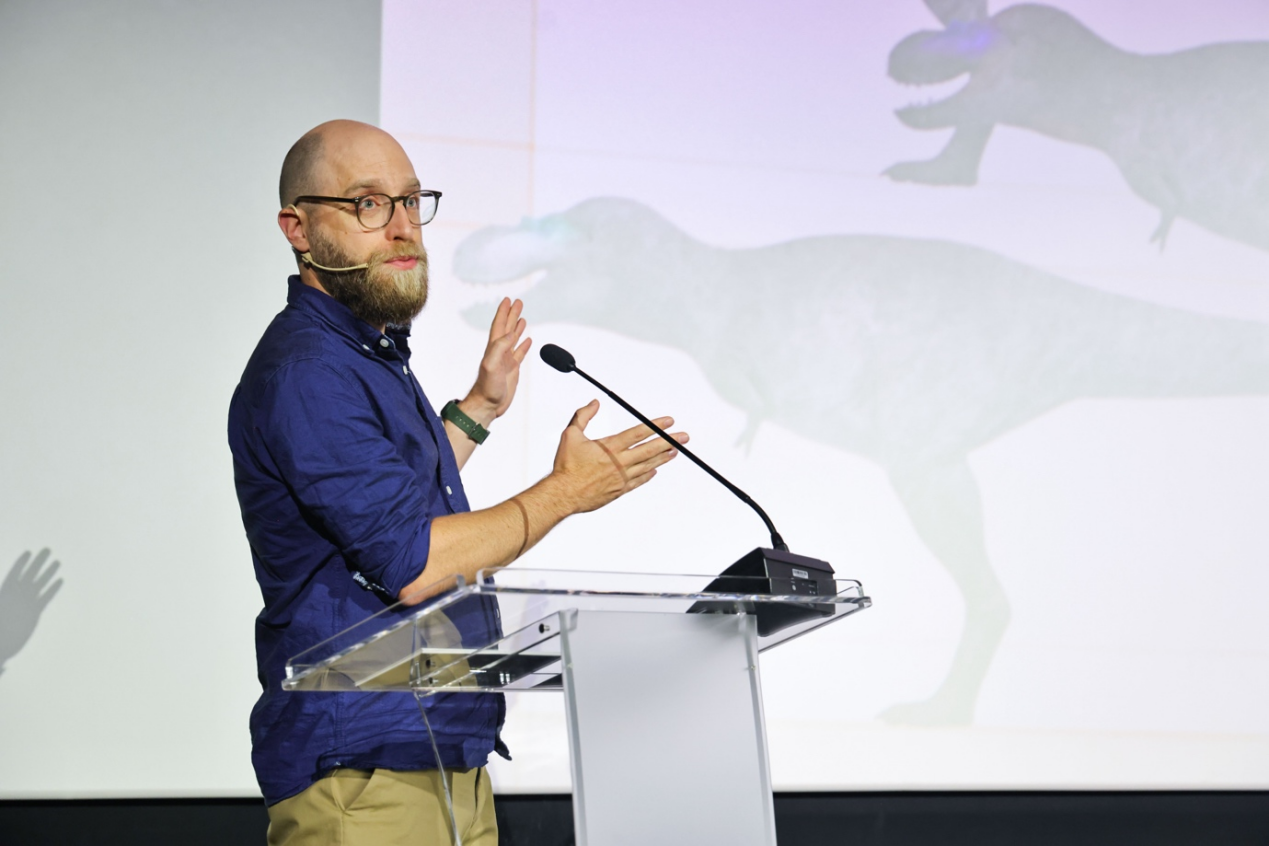
Thomas Scott
It is worth mentioning that although no on-site excavation was carried out in China, China’s scientific research results run through the new season of "Walking with Dinosaurs".
In "Clans at War," viewers will follow the camera back 71 million years to learn the fascinating story of Ruth Albertosaurus and her tribe's fight for survival. Albertosaurus is a close relative of Tyrannosaurus Rex. Although it is smaller than Tyrannosaurus Rex, it is just as deadly. Albertosaurus is also covered with feathers similar to mammal fur. This can be inferred because some Tyrannosaurus fossils have perfectly preserved such details. The 9-meter-long Tyrannosaurus unearthed in China, Yutyrannosaurus, had a layer of fluffy fur, which is the largest animal known to have feathers.
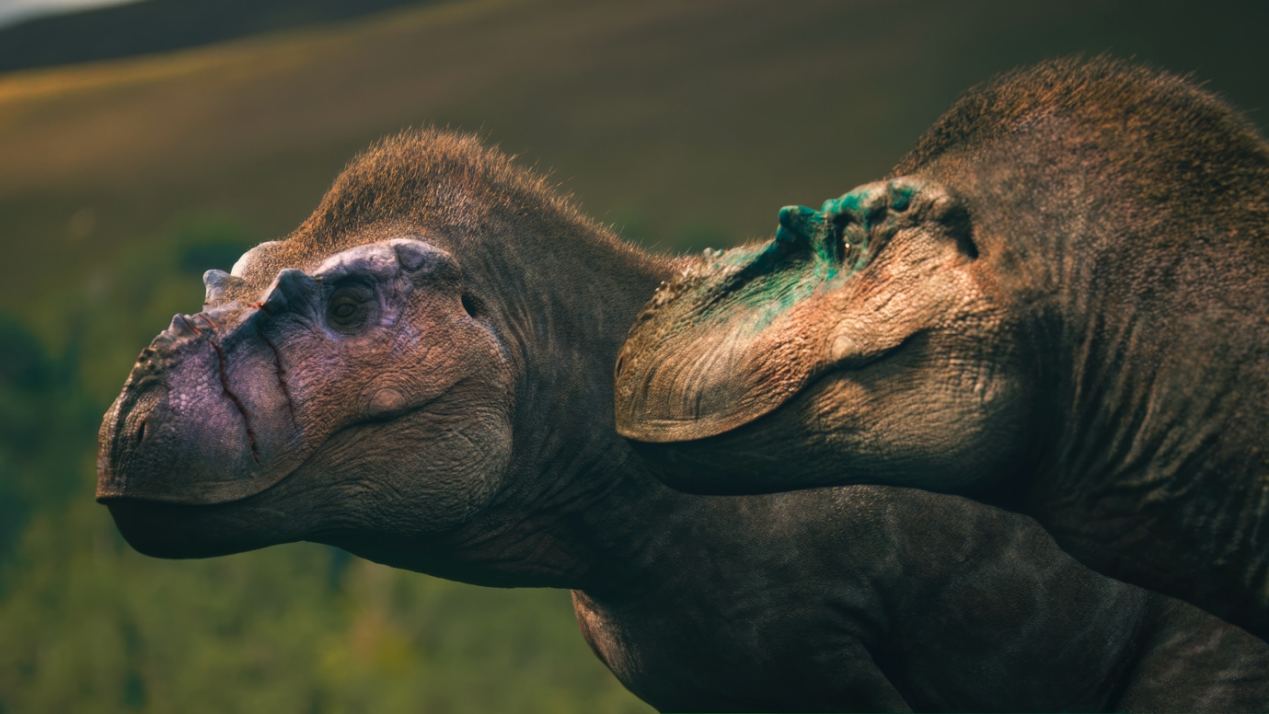
Stills from the new version of "Walking with Dinosaurs"
When recreating the chilling footprints of the Utahraptor, the production team created plaster replicas based on some well-preserved dinosaur footprints found in China. They belonged to a raptor dinosaur with a similar body shape and body structure to the Utahraptor, with only two toes, indicating that these raptors had extremely deadly long claws, which were always raised alone.
"The Utahraptor footprints were made using dinosaur footprint data from Fujian, and the details of the claws standing up were from fossils," Xing Lida stressed. "These results demonstrate the international influence of China's paleontology community."
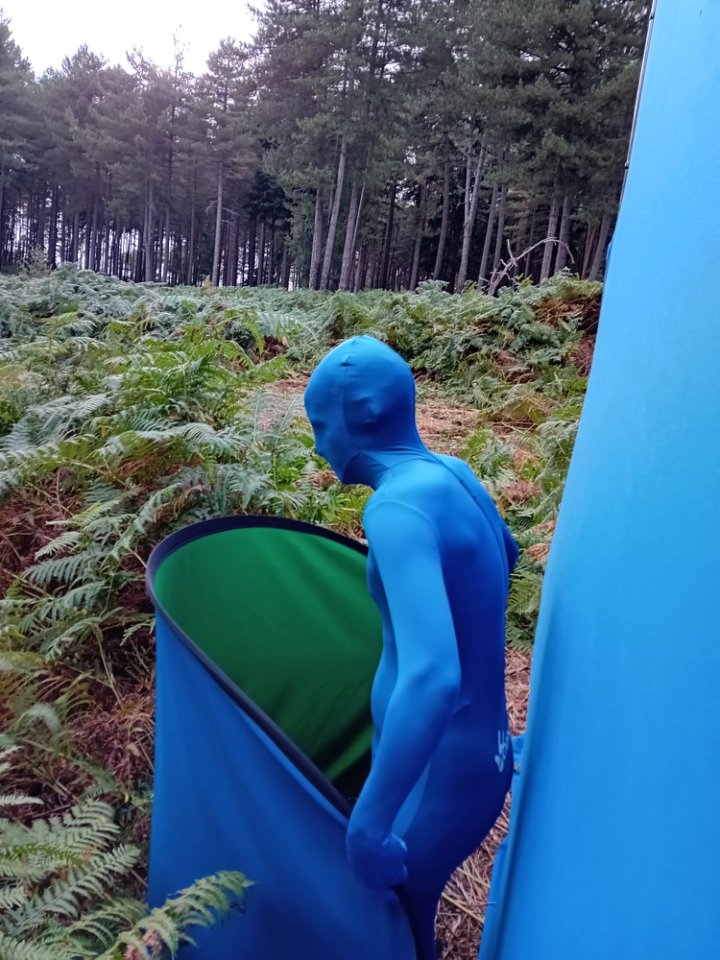
BBC Studios team members wearing special effects costumes for filming
Why do we need to tell dinosaur stories today?
In addition to looking at and understanding the research results of paleontologists, which can help us better understand science, the process of scientific research and different scientific disciplines, Thomas Scott also emphasized: "The study of dinosaurs can also help us raise some very important questions about nature, and these questions are not answered by studying today's nature. For example, the large-scale extinction of dinosaurs, because similar extinctions may take millions of years to occur, so studying dinosaurs can help us deepen our understanding of this."

Stills from the new version of "Walking with Dinosaurs"
"Walking with Dinosaurs" used 1,200 CGI shots and took three years to shoot around the world, transforming scientific data into the "life cycle" of dinosaurs. As Thomas Scott said, "We record dinosaurs and we also ask questions. Human history is not even worth the credits in front of them."
【dialogue】
Scientific rigor + artistic beauty
The Paper: How does the new version of "Walking with Dinosaurs" attract a new generation of audiences?
Thomas Scott: The new version gives fans of the original a great opportunity to enjoy this new documentary with their children. It is also a good opportunity for us to attract new audiences again and allow them to share it with the next generation of audiences.
For a new generation of audiences, it is possible to see the evolution of the narrative of dinosaurs. The new version uses a character-driven narrative, combined with the excavation site of paleontologists, who can see these fossil evidence being dug out from the ground with their own eyes. I think in this process, many viewers will begin to know these characters, fall in love with these characters, support these characters, and even fear some characters. Coupled with the presentation of paleontological evidence, this is a very good combination.
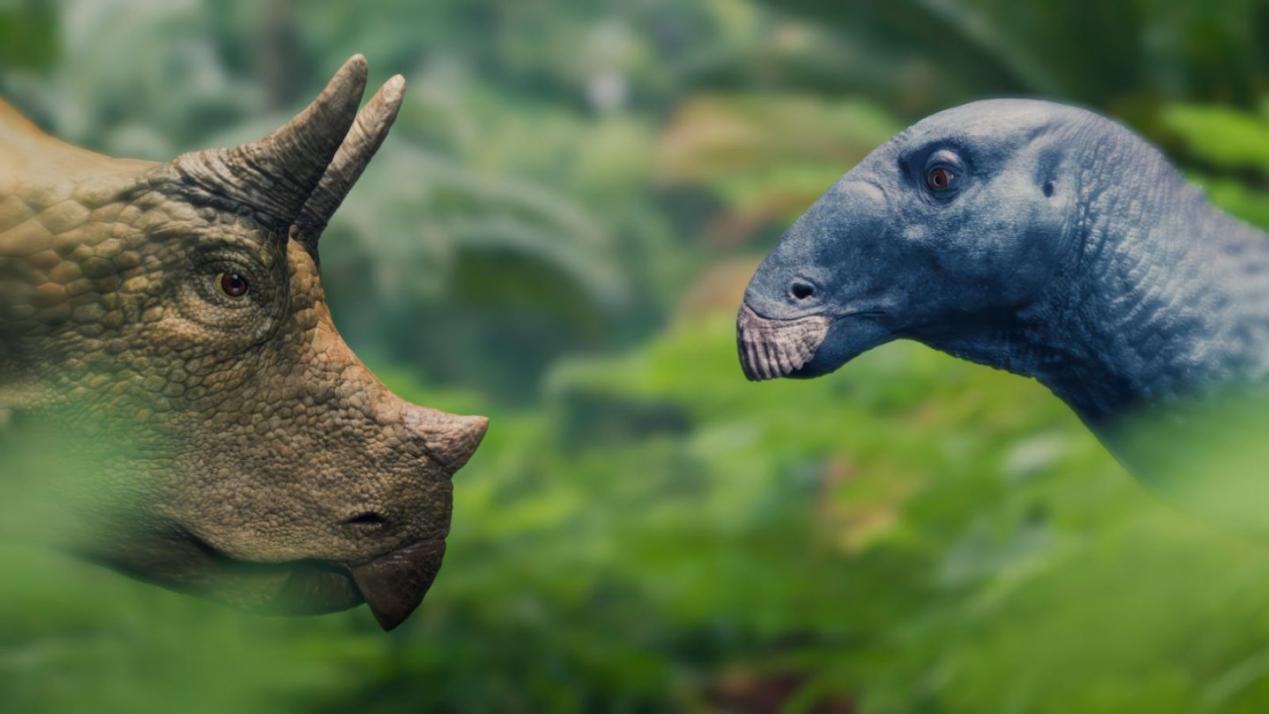
Stills from the new version of "Walking with Dinosaurs"
The Paper: In the new version of Walking with Dinosaurs, how do you translate the latest paleontological research, such as feathered dinosaurs or behavioral ecology, into visual stories? Is there a scientific discovery that directly changed the plot design of this version?
Thomas Scott: When we filmed Walking with Dinosaurs 25 years ago, very few dinosaurs had feathers. We had filmed Utahraptor before, but it didn’t have feathers. But through some archaeological evidence from China, we found that Utahraptor not only had feathers, but we can also roughly see what color it was.
So when Utahraptor is presented this time, it is both a very attractive and scary villain, and also a colorful and feathered image. Therefore, in this version of the documentary, by collecting the latest archaeological scientific evidence from around the world, including some dinosaur research evidence from the United States, we were able to present it organically in the documentary.
The Paper: What breakthroughs has BBC Studios made in CGI, virtual production and 3D scanning technology in recent years? How can these technologies make the "resurrection" of dinosaurs more realistic?
Thomas Scott: First of all, we worked with the world's top CGI company in London to make the dinosaurs come alive. We tried our best to provide them with information about the appearance of the dinosaurs, because the best basis is the details and evidence from actual scientific surveys. At the same time, we worked with very top artists to model the dinosaurs as accurately as possible, and scientists checked every stage of the modeling.
At the same time, we also worked with excellent animation experts to present very beautiful dinosaur movements. Not only that, every movement, every twist, and every breath of the dinosaur is also based on science. So we combined CGI and science to achieve a beautiful effect, and this is also the closest we can see to the real effect of the dinosaurs we know.
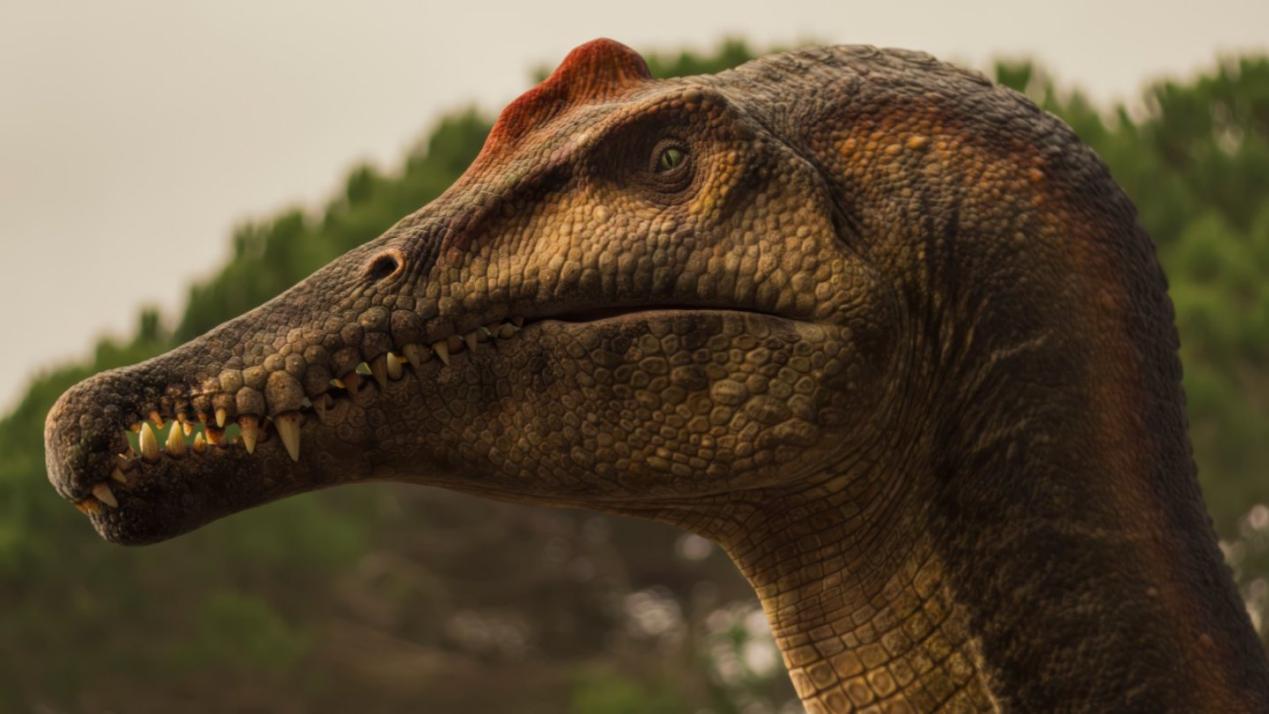
Stills from the new version of "Walking with Dinosaurs"
The Paper: As a producer with an archaeological background, how do you reconcile the different perspectives of paleontologists, visual effects artists, and screenwriters? Has academic controversy ever caused you to revise the script?
Thomas Scott: We start with the paleontologists who are responsible for the excavation of the archaeological site. We will find the excavation site to shoot based on the evidence at the archaeological site. We will first shoot the archaeological excavation itself, which allows us to witness the birth of various fossil evidence. After this part of the filming is completed, we will work with the paleontologists to write the documentary story for each episode. This work is done by the paleontologists who personally participated in the excavation.
We not only have experts for each episode, but also scientific experts for the entire series, who will review our stories as a whole and make them as rigorous as possible. In fact, these paleontologists really like to imagine what the life of the dinosaurs they dug up with their own hands would be like, and they also try to maintain scientific rigor as much as possible in this process.

Fossil excavation site
The dinosaur sound effects are unique
The Paper: When assisting experts in their search for fossils, have you ever encountered any “unexpected treasures”? For example, have you ever discovered a species that was completely different from what you expected during a particular excavation?
Thomas Scott: My favorite moment was the shot of Albertosaurus in Canada. We were telling the story of a dinosaur called Ruth, a very young individual dinosaur, probably in its teenage years, who needed a dinosaur herd. On the last day of excavation and filming, we found the jawbone of a juvenile Albertosaurus. Albertosaurus is a carnivorous, predatory dinosaur, but its fossils are very small and miniature. This was a wonderful moment for us.
The Paper: Does the reconstruction of dinosaur roars rely more on fossil evidence or artistic imagination? Did the research team add the sounds of modern animals during the synthesis process?
Thomas Scott: It's a bit of both. When we can find evidence, we will restore the sound based on the structure of the dinosaur's throat, vocal cords and neck. But when the evidence is limited, we will work with some companies that can find the closest relatives of dinosaurs, such as crocodiles or some birds, and restore them by combining their sounds. I think the final sound effect is very beautiful, but a little scary, very unique, and we have never heard it before.
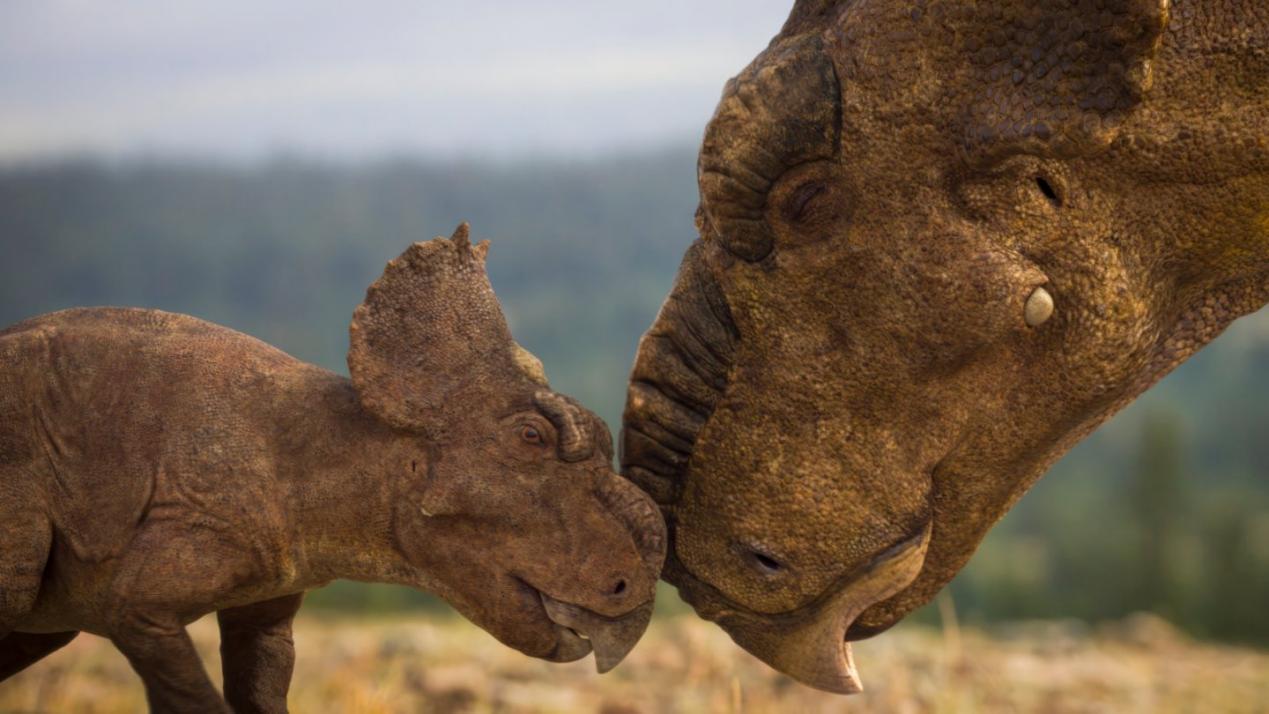
Stills from the new version of "Walking with Dinosaurs"
The Paper: What unique preferences do young Chinese audiences have for scientific content? How does this affect your narrative strategy?
Thomas Scott: I think one thing that is very special about Chinese audiences is their love and enthusiasm for documentary films. We feel that many Chinese audiences are really eager and like to watch this kind of documentary from the bottom of their hearts, which makes me feel very happy and gratified. At the same time, I think many Chinese audiences are very open and receptive to some new narrative methods. Of course, we very much hope that the narrative method presented in "Walking with Dinosaurs" with dinosaurs as the protagonists will also be liked by Chinese audiences.
The Paper: What is the most memorable feedback you have received from dinosaur enthusiasts around the world? Has anyone pointed out any academic errors in your work?
Thomas Scott: First of all, many viewers are very much looking forward to the return of Walking with Dinosaurs, and are very excited. This also fully demonstrates that many viewers love the original Walking with Dinosaurs and have a very high emotional connection. So we feel a strong sense of responsibility to introduce it to the audience of the 21st century again after 25 years, and of course we hope to do a good job in the content of this season.
As for the scientific feedback on the documentary itself, we have received very positive feedback so far, both in terms of shaping the world view and shaping dinosaurs.
Specifically in terms of science, there are many different theories about the lifestyle and behavior of dinosaurs. We chose the most likely or most appropriate theories to tell this story. Because not every question about dinosaurs has a fixed answer, we try to present it as realistically and scientifically as possible.

Stills from the new version of "Walking with Dinosaurs"
If you traveled back to the dinosaur era, what would you bring with you?
The Paper: When making the documentary “How to Live to 101,” have you ever thought about this question: If dinosaurs had not become extinct, what might have been their secret to longevity?
Thomas Scott: The secret of dinosaurs' longevity may require our next exploration. There are many TV programs now focusing on exploring the mysteries of the human body. One of the questions is how we can live a long and healthy life, and many scientific discoveries are beyond everyone's expectations.
I therefore changed my lifestyle, such as learning to play the piano, because learning a new instrument is the best way to maintain the brain's plasticity, adaptability and coordination. So through many documentaries, including this one "How to Live to 101", we reveal a lot of new knowledge and secrets to help everyone live younger and longer.
The Paper: Do you enjoy the excitement of digging for fossils in the wild or the sense of control of making dinosaurs on the set?
Thomas Scott: I have an archaeological background, so I really enjoy excavation in the wild. Whether it is telling the story of humans, Neanderthals, or dinosaurs. I am very fortunate to participate in the excavation of dinosaur fossils around the world. This sense of excitement and anticipation is irreplaceable. Because many dinosaur fossils have only been seen again after hundreds of millions of years, this kind of fun and excitement is something that no other profession can give me. So this is why I am so fascinated by dinosaurs and archaeology.
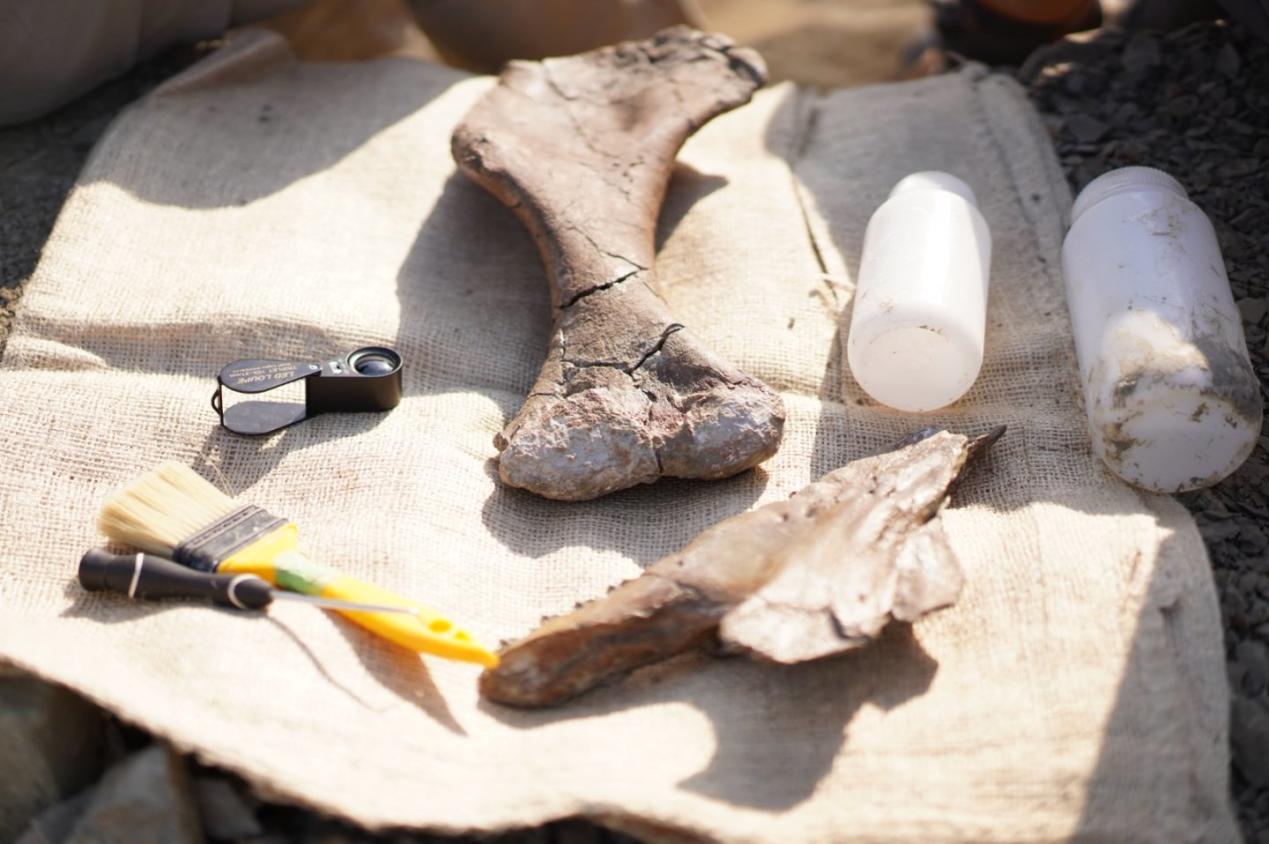
Fossil excavation site
The Paper: Besides dinosaurs, which prehistoric creature or era would you like to “revive”? Megalodon, Cambrian shrimp, or the love story of Neanderthals?
Thomas Scott: I think there are many interesting stories about the Ice Age. At that time, there were many huge animals, such as mammoths, who could live together with humans. Such a lost world contains many mysteries to be discovered, especially the fact that mammoths survived for a long time and became extinct thousands of years ago. I think this itself contains very exciting and romantic mysteries.
The Paper: If you had the chance to travel back to the age of dinosaurs, which era would you most like to go to? What three modern items would you carry with you?
Thomas Scott: If I could go back to any era and see any dinosaur, I would go back 100 million years and go to North Africa to see Spinosaurus. Because at that time Spinosaurus could swim, I think it has many fascinating characteristics, and it was the most numerous large carnivorous animal in that era.
I will bring three things: first, binoculars so that I can see the dinosaurs clearly. If a dinosaur is coming towards me, I can see it in time; second, I will bring camouflage clothes so that I can't be easily found; and the third thing I want to bring is a submarine so that I can see their behavior and hunting process underwater with my own eyes.

Stills from the new version of "Walking with Dinosaurs"
